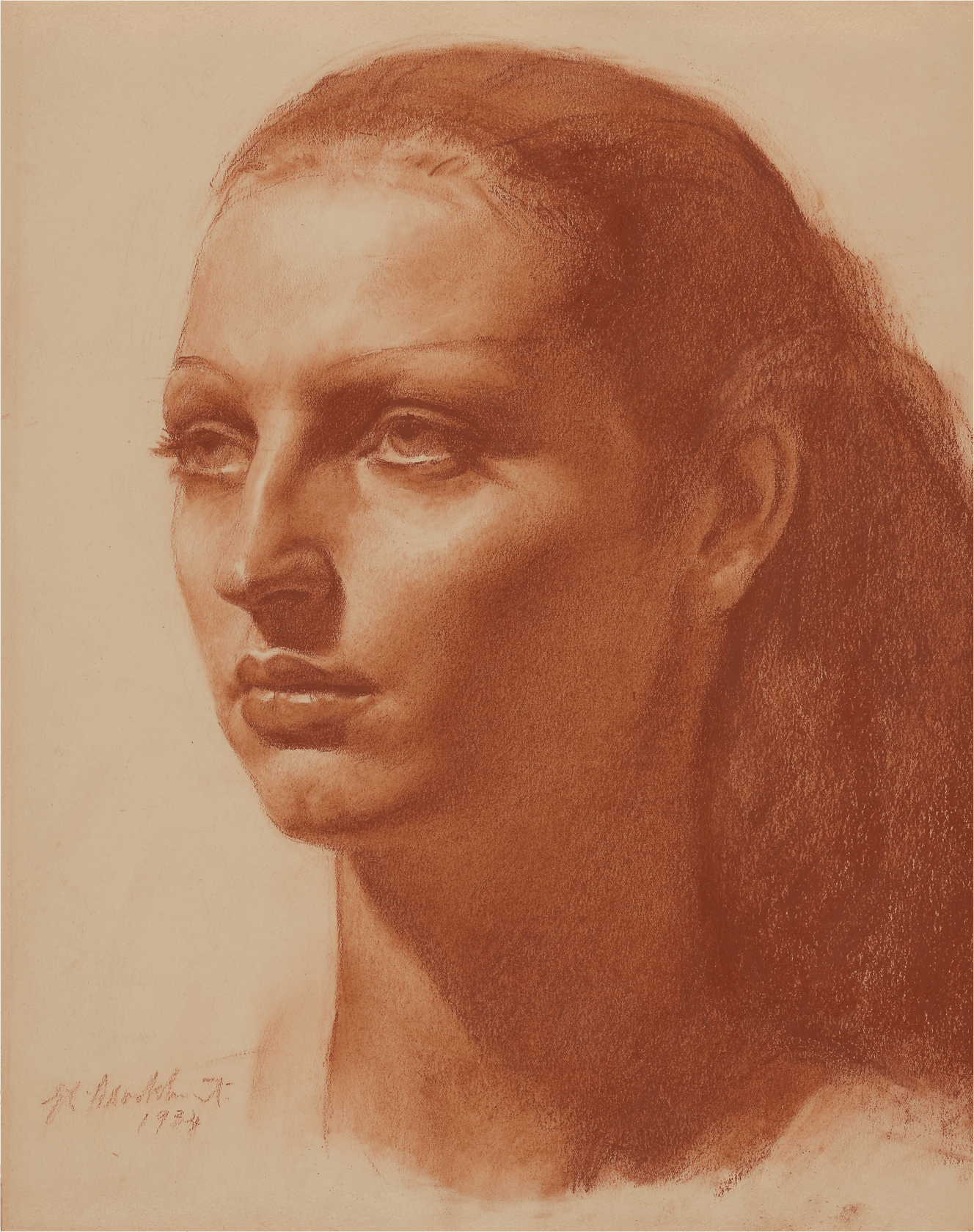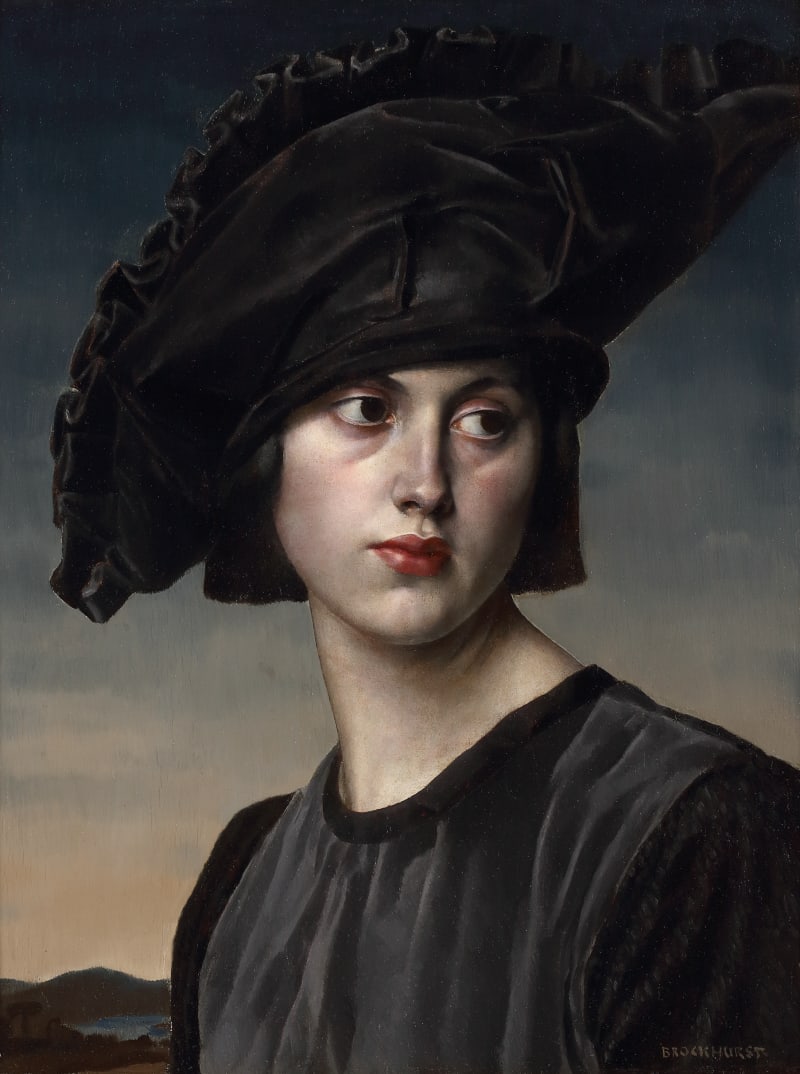This highly finished, almost sculptural, chalk drawing depicts Brockhurst’s second wife Kathleen Woodward, whom Brockhurst called ‘Dorette’. Brockhurst habitually illustrated Woodward with her hair loose, just above shoulder length, whereas in this portrait his sitter takes on a new persona, that of Dorinda, presumably taken from Shakespeare’s The Tempest.
Although Shakespeare does include Dorinda as a character in his comedy, John Dryden’s eighteenth-century adaptation The Tempest, or The Enchanted Island develops Dorinda as a detailed character and a companion to Miranda.
Brockhurst met Woodward after he became a Visitor to the Royal Academy Schools in 1928 where she was a model from the age of sixteen. He became enamoured with her youthful beauty and began having an affair with her; he was twenty-two years her senior and already married. Woodward became Brockhurst’s muse and he would often title portraits of her after Shakespearean characters such as Ophelia and Dorinda, just as he had titled portraits of his first wife...
This highly finished, almost sculptural, chalk drawing depicts Brockhurst’s second wife Kathleen Woodward, whom Brockhurst called ‘Dorette’. Brockhurst habitually illustrated Woodward with her hair loose, just above shoulder length, whereas in this portrait his sitter takes on a new persona, that of Dorinda, presumably taken from Shakespeare’s The Tempest.
Although Shakespeare does include Dorinda as a character in his comedy, John Dryden’s eighteenth-century adaptation The Tempest, or The Enchanted Island develops Dorinda as a detailed character and a companion to Miranda.
Brockhurst met Woodward after he became a Visitor to the Royal Academy Schools in 1928 where she was a model from the age of sixteen. He became enamoured with her youthful beauty and began having an affair with her; he was twenty-two years her senior and already married. Woodward became Brockhurst’s muse and he would often title portraits of her after Shakespearean characters such as Ophelia and Dorinda, just as he had titled portraits of his first wife Anais after characters in Greek mythology, Hermione and Pandora.
[1] Leigh, L. (2014) Shakespeare and the Embodied Heroine, Staging Female Characters in the Late Plays ad Early Adaptations. Basingstoke: Palgrave Macmillan, p. 76.





